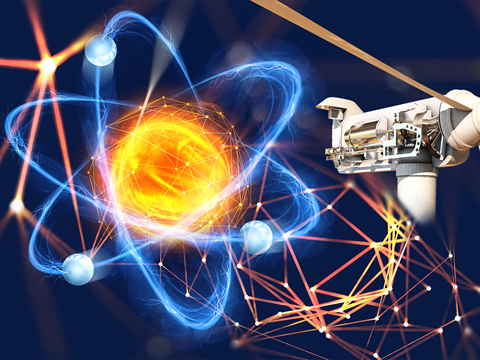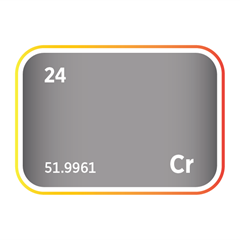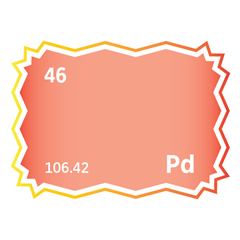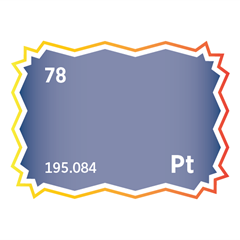Smartphones and Touch Screens
Critical minerals, policy, and the energy transition
Critical Minerals Powering your Smartphone
Smartphones represent the pinnacle of modern innovation, housing cutting-edge technologies that rely on various critical minerals. These minerals are pivotal in enhancing performance, durability, and sustainability, thereby enabling the creation of high-performance devices. Each smartphone component relies on specific minerals from the display to the battery to function optimally. In the ever-evolving landscape of electronic technologies, these critical minerals are indispensable for maximizing performance and sustainability. The demand for high-performance devices necessitates a range of minerals that contribute to various functions, such as photovoltaic film coatings, touch screens, casings, displays, charging systems, and more. Understanding these critical minerals' pivotal role and their supply chain dynamics is paramount for driving innovation and ensuring a sustainable future in the electronics sector. As global policies and market dynamics shift, staying informed about these materials and their applications will be key to navigating the energy transition and harnessing new opportunities.
Key Minerals and their Roles
Glass
Aluminium, Silicon, and Potassium are fundamental in manufacturing high-quality glass, providing structural integrity and thermal stability. Silicon dioxide (silica) is the primary component, while aluminium oxide enhances durability and chemical resistance. Potassium, often added as potassium oxide, strengthens the glass through ion exchange, making it more resistant to scratches and impact. However, high-purity silicon supply constraints and reliance on regions like China pose challenges for the industry.
Glass polishing
Lanthanum, Cerium, and Praseodymium rare earth elements are used in polishing compounds to achieve smooth, high-quality glass surfaces. Cerium oxide is particularly effective in removing fine scratches and improving optical quality. The supply of these elements heavily depends on China, which controls most global production and processing, creating potential supply chain vulnerabilities.
Touch screen
Potassium, Strontium, Niobium, Indium, Tin: Indium tin oxide (ITO) is crucial for touch screens because it is a transparent conductor that allows for the passage of electrical currents while remaining invisible to the naked eye. Potassium and strontium enhance the chemical toughness of the glass, making it more resistant to damage. Niobium helps improve the electrical conductivity and mechanical strength of the touch-sensitive layers. Indium, a critical component, is particularly scarce, with significant reliance on Chinese production. This dependency highlights the need for diversifying sources to mitigate supply risks.
Phone casing
Carbon, Fluorspar, Fluorine, Sodium, Magnesium, Aluminium, Chlorine, Titanium, Chromium, Iron, Nickel, Bromine: These materials provide strength, durability, and lightweight properties essential for phone casings. Carbon fibers and aluminium-magnesium alloys offer structural integrity while keeping the device lightweight. Titanium and chromium add corrosion resistance, while fluorine-based compounds enhance the durability of protective coatings. The supply of many of these elements is concentrated in a few countries, particularly China, posing potential supply chain risks.
Colour display and backlighting
Gallium, Germanium, Yttrium, Lanthanum, Praseodymium, Europium, Gadolinium, Terbium, Dysprosium: These rare earth elements are critical for producing vibrant and efficient displays. Europium and terbium are key for red and green colours, while gallium and germanium are used in LED semiconductor materials. Yttrium, lanthanum, and praseodymium enhance brightness and efficiency. China’s dominance in rare earth production underscores the supply chain’s vulnerability to geopolitical and market shifts.
Charging
Iron, Zinc, Niobium, and Tungsten: These elements are essential in charging system components. Tungsten is used in electrodes for its high melting point and conductivity, while niobium enhances the efficiency of superconductors. Zinc and iron are used in batteries and power supplies, improving the reliability and performance of charging units. Tungsten and niobium have significant supply from China, creating potential constraints.
Wiring and electronics
Beryllium, Copper, Molybdenum, Palladium, Platinum, Silver, Gold, Tungsten, Tin, Tantalum, Lead, and Bismuth: High-conductivity materials like copper, silver, and gold are essential for wiring and electronic components. Beryllium and molybdenum provide strength and thermal stability in connectors and switches. Palladium and platinum are used in contacts and sensors for durability. The supply of many of these elements, particularly tantalum and tungsten, is heavily concentrated, with significant reliance on Chinese production, highlighting the need for supply chain diversification.
Microphone, speakers and vibration unit
Boron, Iron, Nickel, Tungsten, Lanthanum, Praseodymium, Neodymium, Gadolinium, Terbium, Dysprosium: Strong permanent magnets made from neodymium-iron-boron (NdFeB) are used in microphones, speakers, and vibration motors to enhance audio quality and device responsiveness. These elements provide the necessary magnetic strength and durability. Tungsten and iron add to the robustness and longevity of these components. he dependency on China for rare earth elements like neodymium and dysprosium presents significant supply risks.
Chips and semiconductors
Boron, Silicon, Phosphorus, Gallium, Germanium, Arsenic, Selenium, Antimony: Silicon is the fundamental material for semiconductor chips, forming the basis of most electronic circuits. Boron and phosphorus are used as dopants to modify the electrical properties of silicon. Gallium arsenide (GaAs) and other compound semiconductors like germanium and antimony provide high-speed and high-frequency performance for advanced electronics. Arsenic and selenium are used in photovoltaic cells and other specialized semiconductor applications. The supply of high-purity silicon and other semiconductor materials is geographically concentrated, with China being a major player, presenting potential supply chain vulnerabilities.
Battery and casing
Lithium, Carbon, Aluminium, Manganese, Cobalt, Iron, Nickel, Cadmium, Terbium, Dysprosium, Erbium, Thulium, Ytterbium, Lutetium: Lithium is the key element in lithium-ion batteries, offering high energy density and efficient charge cycles. Carbon, in the form of graphite, is used for the anode material. Aluminium is used for battery casing due to its lightweight and corrosion resistance. Manganese, cobalt, and nickel are used in the cathode to enhance battery performance and stability. Rare earth elements like terbium, dysprosium, and others are used in various components to improve the efficiency and longevity of batteries. The supply of cobalt and rare earth elements is particularly concentrated in China and the Democratic Republic of Congo, creating significant supply chain risks and highlighting the importance of developing alternative sources and recycling methods.


Critical sectors using strategic minerals

Meet the Critical Minerals team
Trusted advice from a dedicated team of experts.

Henk de Hoop
Chief Executive Officer

Beresford Clarke
Managing Director: Technical & Research

Jamie Underwood
Principal Consultant

Ismet Soyocak
ESG & Critical Minerals Lead

Rj Coetzee
Senior Market Analyst: Battery Materials and Technologies

How can we help you?
SFA (Oxford) provides bespoke, independent intelligence on the strategic metal markets, specifically tailored to your needs. To find out more about what we can offer you, please contact us.




































































